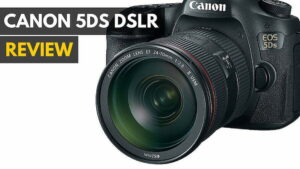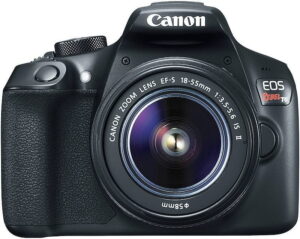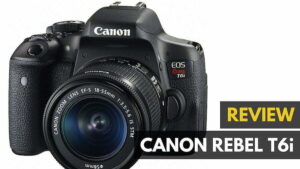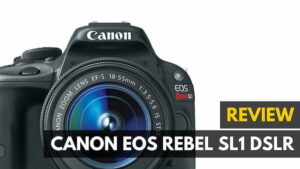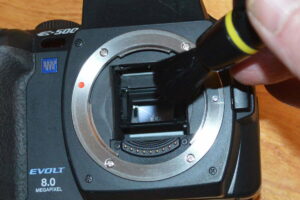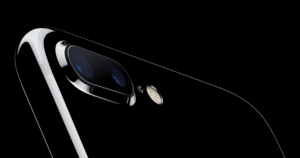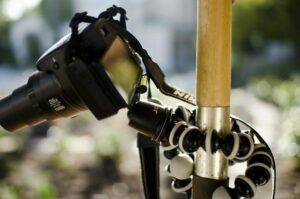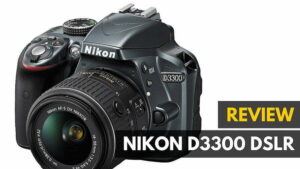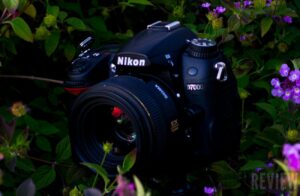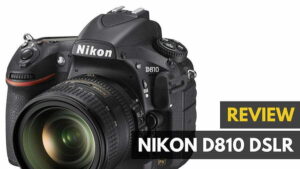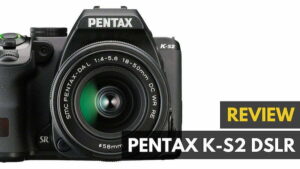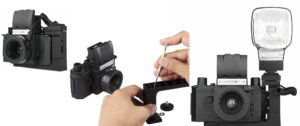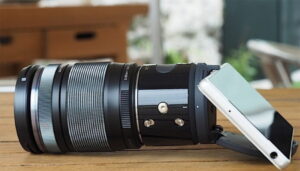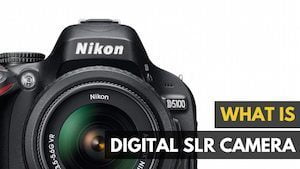Nikon has consistently had a strong presence in the DSLR market, offering cameras like the Nikon D810, which is one of the best DSLR cameras aimed at advanced shooters. Or there’s the Nikon D3300, easily one of the best DSLR cameras for beginners. The manufacturer hasn’t forgotten about the intermediate portion of the DSLR market though, as shown by my Nikon D5500 DSLR review. If you want to keep your camera steady, during your next shoot you should also read our self leveling tripod mount review.
Image quality is very good with this camera, thanks to its APS-C sized image sensor, which will appeal to intermediate photographers. And Nikon provided a host of fun and easy-to-use features — including a touch screen LCD — that will give those new to DSLR cameras some desirable shooting options. Continue reading to learn more about the Nikon D5500 pros and cons!
Overview
WHY IT’S A TOP PICK: An easy to use DSLR that provides excellent value among intermediate cameras.
Summary: The Nikon D5500 has a lot of very good features, including a competitive price point, strong image quality, and versatile options that will appeal to both inexperienced and intermediate photographers.
Price: $696.95 from Amazon (body only)
Available: Jan 2015
Model: D5500/1546
What We Liked
- Wide range of very good features; weaknesses are minimal in this model
- Image quality is strong in most shooting conditions
- Fast performing model that can shoot at up to 5 fps in JPEG and 4-plus fps in RAW
- Plenty of easy to use features, including a touch screen LCD
- Very reasonable price point
- Sensitivity range of ISO 100-25,600
What We Didn’t
- Might not have quite enough shooting power to appeal to highly experienced photographers
- Redesigned right-hand grip may not work well for those with large hands
- Noise problems are noticeable at ISO 6400 and above
- Some photographers won’t find quite enough changes from D5300 to warrant an upgrade
Nikon D5500 DSLR Specs
| Image Sensor Type | DX (23.5×15.6 mm) |
| Megapixels | 24.2 |
| Optical Zoom Lens | NA, uses F mount interchangeable lenses |
| LCD Touch and Tilt Screen | |
| Viewfinder | |
| HD Video | |
| ISO | 100-25600 |
| Avg Battery Life | 820 photos |
| Weight | 14.9 oz (body only) |
| Size | 4,9 x 3.9 x 2.8 inches |
| Price | $696.95 |
| Buy Now |
Design and Build
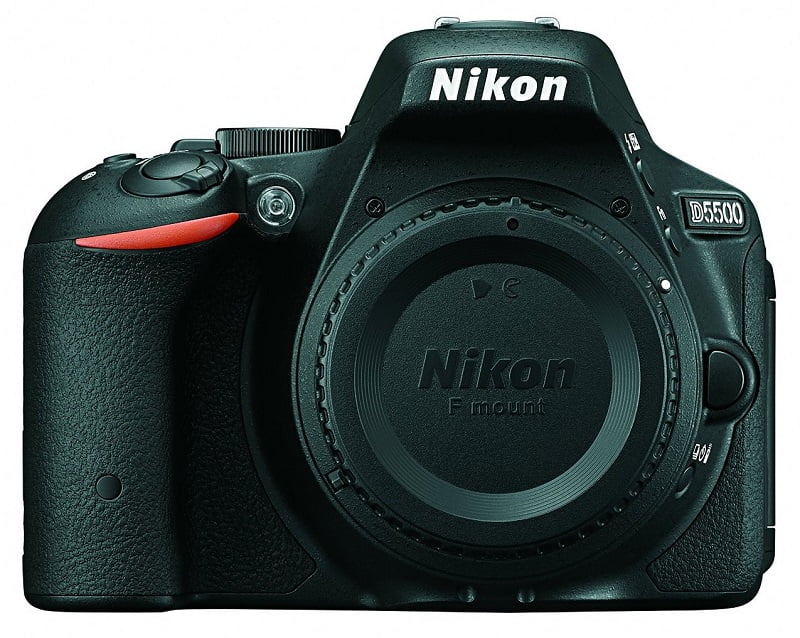
If you’re looking to upgrade from the Nikon D5300 to the D5500, you might not find a lot of reasons to make the change, unless you really want a touch screen display. The 3.2″, 1.2M dot fully-articulating touch screen LCD display does make this camera easier to use, especially for those who appreciate touch screen smartphones and are familiar with that interface. The D5500’s LCD measures 3.2 inches diagonally and is tiltable, both of which are features available with the D5300 too.
Still, the D5500 release date gives it an advantage over the D5300, as it’s 18 months newer, making the D5500 a best digital camera for 2019. The D5500 also features Nikon’s latest Expeed 4 image-processing engine and a 39-point autofocus system.
The Nikon D5500 GPS options are limited to adding an external GPS unit to the camera. The D5300 had a GPS built into it.
Related: If you want something really simple just for capturing those family memories, definitely check out our Nikon D5200 DSLR review.
The other area where the two cameras differ is in terms of weight. The D5300 weighs 16.9 ounces (for the body only), while the Nikon D5500 DSLR camera body has a weight of 14.9 ounces. To reduce the size of the D5500, Nikon shrunk the right-hand grip, which may make the camera tough to hold for some people with large hands.
The D5500’s optical viewfinder works extremely well, giving you a great look at the scene. And the camera works much faster in viewfinder mode than if you’re using the display screen to frame the images (called Live View mode). In viewfinder mode, for example, you’ll have a shutter lag of about 0.2 or 0.3 seconds. But in Live View mode, the shutter lag can be 1 second or more.
The Nikon D5500 has a Live View toggle button, allowing you to switch quickly between viewfinder mode and Live View mode. Or you can just lift the D5500 to your eye, and the camera will automatically activate viewfinder mode.
Image Quality
With its APS-C sized image sensor and 24.2 megapixels of resolution, the Nikon D5500 produces images of terrific quality in a variety of lighting conditions. You won’t quite receive the same image quality that you’d have with a full frame image sensor, such as is found in the D810, but the D5500’s images are very good for everyday photography.
The Nikon D5500 provides the ability to shoot in RAW or JPEG image formats, which is a common feature with DSLR cameras. You can record about 5 frames per second in JPEG mode with a limit of 30 total shots, and in RAW you’ll record a better than average 4-plus frames per second with a limit of 10 total shots.
Although this camera’s image sensor is of great quality, the image sharpness you can achieve with the D5500 will depend in large part on the lens you pair with it. You can use any interchangeable lenses that are compatible with the F mount on this camera. Nikon provides dozens of lenses for this type of DSLR camera, which gives the D5500 plenty of versatility.
Related: Like what you have read about this camera? You might be interested in our Nikon D700 review.
Low Light Performance and Movie Mode
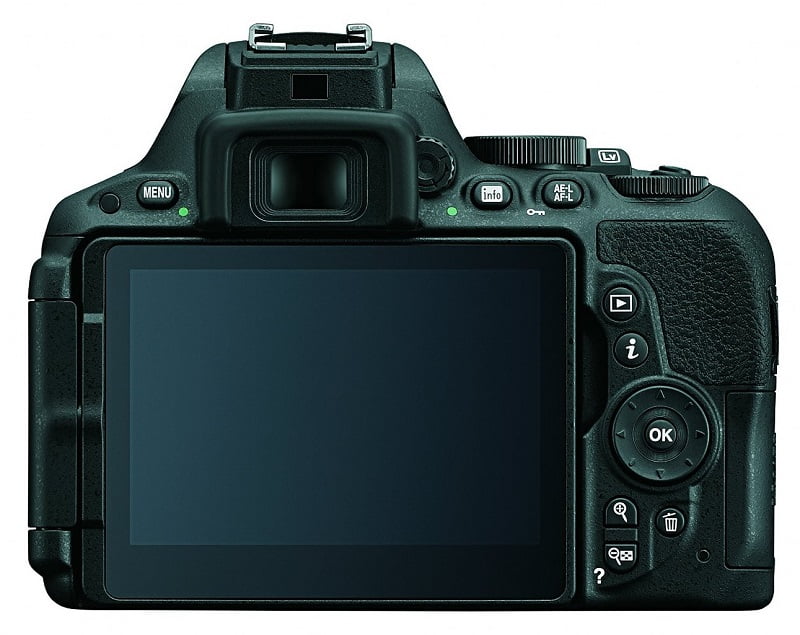
In low light, the AF system sensors are supported by an AF assist lamp located on the front plate of the camera. Low light images are about average with this model versus other intermediate-level DSLRs. You can expect to receive good images through the ISO 3200 setting, but there will be a bit of a loss of image quality for ISO 6400 and higher because of added noise.
Nikon provided a popup flash unit with this unit, and it works well for low light photography. So rather than bumping the ISO close to the maximum setting of 25600, you’ll often have better results by using the popup flash unit. Or you can add an external flash unit to the hot shoe.
The D5500 video quality is better than average, as Nikon chose to emphasize movie recording with this model, unlike what some other DSLR manufacturers have done in the past. Although it’d be nice if the D5500 had 4K video recording, the full HD recording at up to 60 fps works very well for everyday shooting. And you can set both the aperture and shutter speed during movie recording.
Battery Life
Nikon provided great battery life with the D5500, especially compared to its predecessor. Nikon estimates photographers can record up to 820 photos per charge, whereas the D5300 was limited to 600 shots.
To make the most of the expanded battery capacity of the D5500, you’ll want to shoot in viewfinder mode the majority of the time, as using Live View mode will drain the battery more quickly. A more realistic battery life for the D5500’s battery is about 625-675 shots, allowing for some reviewing of stored photos on the LCD, recording a few movies, and accessing the camera’s menu screens.
Nikon D5500 Review Wrap Up
The Nikon D5500 is a DSLR camera that’s very easy to fall in love with, as it has quite a few average and above average features versus other models in its price range. It’s extremely easy to use too. Any Nikon D5500 issues are minimal, as the manufacturer ensured that it’s a very good all-around camera. Perhaps the biggest problem you’re going to encounter with the D5500 is that it doesn’t offer a lot of image quality improvements over what its predecessor, the D5300, provides. Of course, that doesn’t mean the D5500 is a bad camera, nor does it mean the D5300 is a better model. It just means that those who already own the D5300 may not want to upgrade. But those that are seeking an entry-level or intermediate DSLR model will enjoy the performance levels the Nikon D5500 can provide.
Related Articles:
![10 Best Binocular Cameras in [year] 1 best binocular camera](https://www.gadgetreview.dev/wp-content/uploads/best-binocular-camera-image-300x200.jpg)

![Best Canon DSLR in [year] ([month] Reviews) 3 The top Canon DSLR cameras.||Intermediate and entry-level photographers will appreciate this mid-level DSLR offering from Canon](https://www.gadgetreview.dev/wp-content/uploads/best-canon-dslr-300x165.jpg)

![Best DSLR Camera for Beginners in [year] 5 Top DSLR Camera for Beginners|The Canon T6i DSLR offers many features for beginners.|The Nikon D3300 DSLR offers plenty of resolution for someone new to DSLR photography.|An articulated LCD](https://www.gadgetreview.dev/wp-content/uploads/best-dslr-camera-beginners-featured.jpeg)
